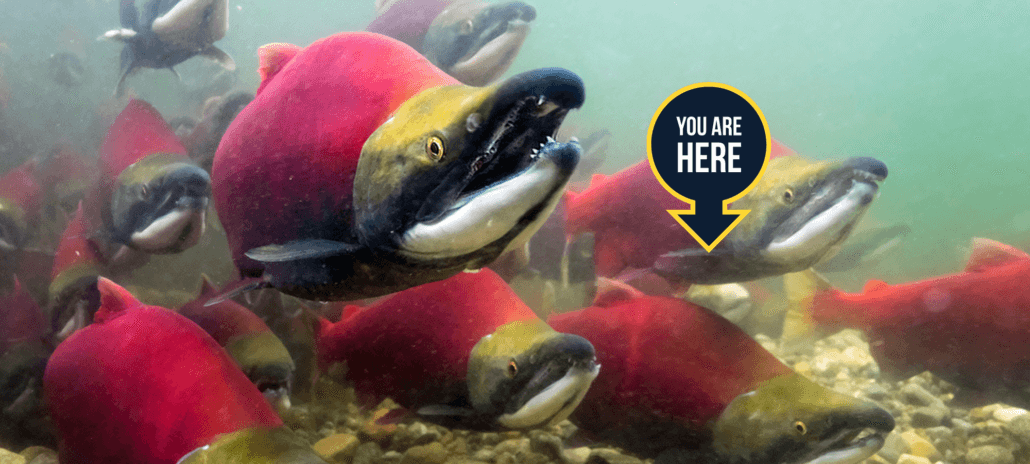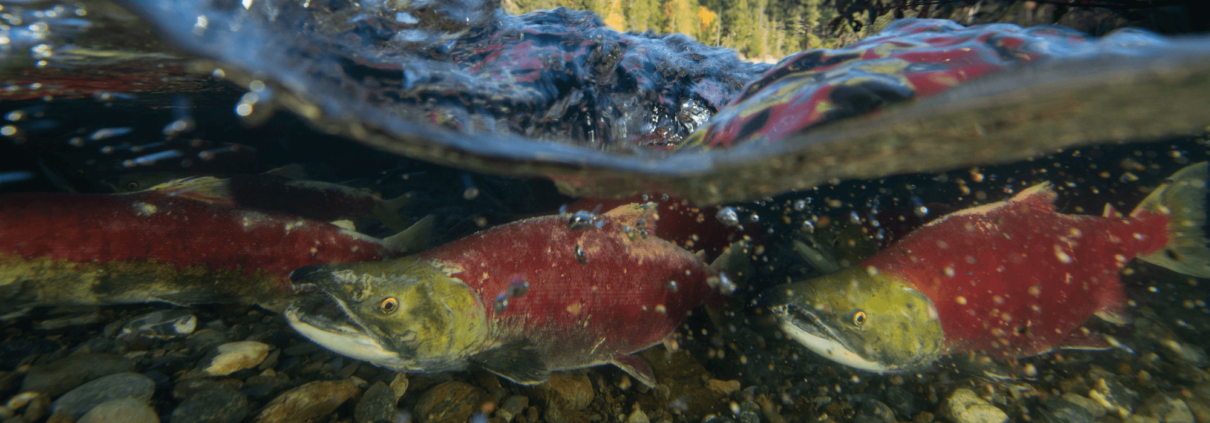Salmon are coming home. Here’s how to see them!
Good news: salmon are returning home to B.C.’s rivers and streams. Thanks to the Pacific Salmon Foundation (PSF)’s interactive Salmon Spotting map, you can witness one of nature’s most spectacular migrations.
From late summer to early winter in B.C., Pacific salmon return to creeks, streams, and rivers to spawn. Pacific salmon are born in freshwater rivers, migrate to the ocean where they spend several years feeding and growing, then return to their natal stream as spawning salmon to reproduce and die.
PSF’s newly-launched Salmon Spotting map shows the best public spots in the province to see the fish in action. The map includes more than 70 family-friendly locations with clearly marked trails and public viewing areas across Metro Vancouver, Fraser Valley, Sea-to-Sky, Vancouver Island, Sunshine Coast, Southern Interior, and Northern B.C.
You can also read safety tips to prepare for your visit, and share your favourite public-access salmon spotting location with us by submitting a location or using the #SalmonSpotting hashtag on social media.
Metro Vancouver is entering the salmon return season, with the North Shore already seeing returns. Head on over to our map to explore #SalmonSpotting parks, trails, rivers, and lookout points in Metro Vancouver, including in the North Shore, Tri-Cities, Burnaby, Surrey, Maple Ridge, Bowen Island, and more. While some salmon runs started in the summer, various Chinook, chum, pink, sockeye and coho salmon runs can be seen in the region from September through December.
“The opportunity to observe the journey and life cycle of Pacific salmon is nothing short of spectacular. We invite you to join us and witness the marvel,” says Michael Meneer, PSF President and CEO. “Seeing salmon in our own communities emboldens us to take action and do everything in our power to take care of this iconic species. We can come together as People for Salmon to make a difference.”

Below, please find a list of fun facts about the Pacific salmon migration that your audience may enjoy:
- 2022 is a dominant year for Fraser River sockeye, meaning impressive return numbers are expected. Sockeye return in abundant numbers one in every four years.
- Pacific salmon are anadromous, meaning they reproduce in streams, but rear for a portion of their life in oceans, where they accumulate more than 99 per cent of their adult weight, before returning to freshwater to reproduce, or spawn, and culminate their life cycle.
- Pacific salmon return ‘home’ to their natal streams to reproduce. Adults return to the same streams that their parents used. Scientists believe that ‘homing’ is accomplished by tracing ‘pheromones’ or chemical signatures of the home stream. Salmon have an extremely keen sense of smell – they can smell chemicals down to one part per million.
- Salmon can migrate more than 3,000 kilometres upstream through freshwater to spawn. That is comparable to driving halfway across Canada.
- Salmon can jump up to two metres to cross obstacles in rivers – the same height some Olympic athletes can jump.
Visit PSF’s Salmon Spotting map.
Media inquiries: contact Braela at bkwan@psf.ca.



